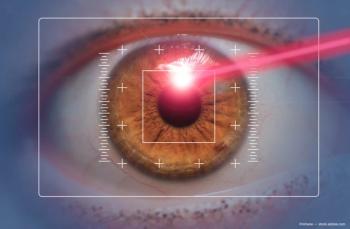
Unique model illustrates fluidic flow during torsional phaco
Charleston, SC-Torsional phacoemulsification, which is accomplished with the OZil handpiece (Alcon Laboratories), is the newest incarnation of a phacoemulsification process that has remained virtually unchanged for 4 decades, since Charles Kelman, MD, introduced ultrasonic phacoemulsification. The improvements promised by this torsional technology include less dispersion of nuclear fragments, improved cutting performance, and improved thermal safety profile.
Torsional phaco utilizes ultrasonic oscillations in a side-to-side movement rather than the conventional linear (back and forth) motion of traditional phaco. The side-to-side motion surgically seems to alter totally the intraocular dynamics of the phacoemulsification as we know it.
While I was more than satisfied with my results with conventional ultrasonic phacoemulsification, I was also intrigued by the mechanics of this novel technology and decided to study this innovation clinically to investigate if it actually was "new" and "different" as opposed to something that was merely "new" and "improved."
The followability is excellent, and the lens material literally dissolves at the touch of the Kelman tapered tip. The chamber stability and surgical control was such that I could operate down in the level of the capsular bag, and draw the nuclear pieces to the tip while remaining below the iris plane. With torsional phaco, the lens material stays at and on the tip. Compared with my experiences with traditional longitudinal phaco, there is virtually no chatter or swirling of loose nuclear material with torsional phaco.
While I appreciated the increased efficiency and the crystal-clear postoperative corneas, I couldn't help but wonder: Why does the material stay at the tip better? Why is the process so much more efficient? I hadn't changed my surgical technique. I wondered if the improved efficiency was only a factor of the tip mechanics.
The study
In an effort to explain what we were seeing clinically, Luis de Castro, MD, Helga Sandoval, and I developed a cadaver eye model to evaluate intraocular fluidics, and we applied that model to clinical torsional and traditional phacoemulsification.
We used micro-carrier beads with a core material made of cross-linked polysterene and a surface coating of collagen, 30 fresh porcine eyes, and 16 fresh human globes from bilateral donors (that were not suitable for transplantation). The beads were very small with a diameter of 125 to 212 µm and a surface area 390 cm2 /gram. The beads had a specific gravity of 1.02, which meant they would stay suspended in balanced salt solution (BSS), and not be weighed down in the anterior chamber.
Newsletter
Don’t miss out—get Ophthalmology Times updates on the latest clinical advancements and expert interviews, straight to your inbox.















































.png)


